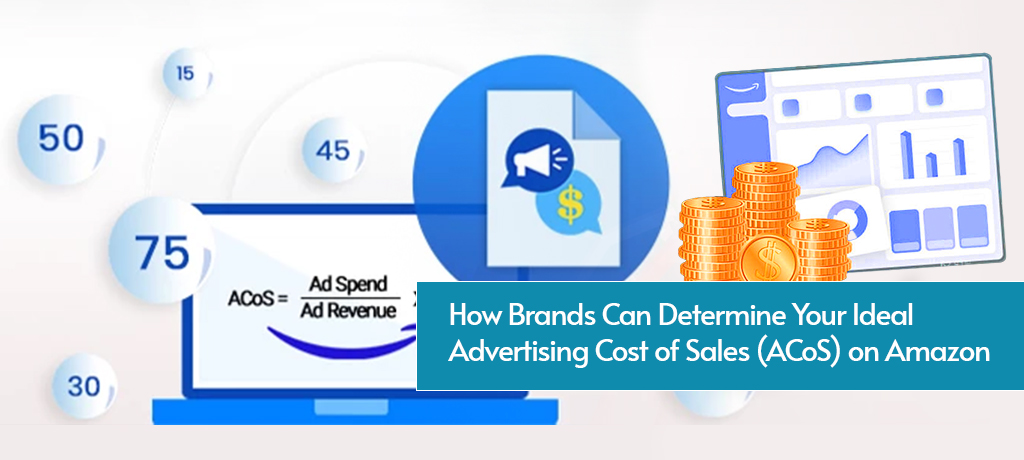Marketplace Expansion
Key Elements for a Successful 3P Marketplace Strategy for Amazon
What Is A 3P Marketplace Strategy? [2024]
A strong strategy for the company’s future expansion is essential for a 3P seller on Amazon to reach its maximum potential. With this ambition to grow, you will have to overcome many obstacles. Amazon sellers wanting to grow their operations, increase their market share, and boost their revenue should be aware of the obstacles they will face and plan to overcome them. Online retailers today face a deluge of rivals; to stand out in the evergrowing 3P marketplace, they must be resourceful and innovative.
Naturally, more stability, enhanced operational efficiency, and better brand awareness are benefits of expanding a business. Furthermore, scaling is essential for high-growth 3P sellers to maintain competitiveness and sustain development. Thankfully, sellers have a variety of options when it comes to techniques that can help them expand. Employing the 3P marketplace strategy that complements your Amazon firm’s strengths is usually the key. Consider these suggestions for 3P sellers looking to expand their Amazon business.
What is a 3P marketplace?
A third-party marketplace is abbreviated as 3P Marketplace. It implies that smaller businesses can have their branded storefront on a bigger e-commerce platform like Walmart or Amazon and sell their items directly to consumers. The parties to the sale are the same as those in a traditional marketplace. In this transaction, the marketplace only acts as a middleman. Given that neither the buyer nor the vendor would be there if the marketplace did not exist, it is safe to say that it would not occur.
Typically, sellers handle all aspects of the sale on a 3P marketplace. Included under this category are shipping and customer service concerns. With the expansion of 3P marketplaces, some have begun to provide sellers with their fulfillment services. One example is the Amazon Fulfillment Center, where Amazon handles the fulfillment process on behalf of its customers in return for a charge.
Understanding 1P Vs. 3P Model On Amazon
Amazon takes on the role of seller of record in the 1P model, also called Vendor Central, by acting as both retailer and buyer of goods directly from the manufacturer. In this model, the company sells its wares in bulk to Amazon, which handles order processing, customer support, and stock management.
However, companies can participate in Amazon’s marketplace as 3P sellers using the Seller Central concept, which is part of the 3P model. While Amazon manages the 3P marketplace and logistics, brands own their inventory and take care of order fulfillment and customer service.
A significant shift from 1P to 3P has emerged due to the evolution of Amazon’s marketplace. The company has recognized 3P sellers’ growing significance within Amazon’s ecosystem. There are now more 3P merchants than first-party vendors on Amazon, and 3P sales provide a significant portion of overall revenue.
Why Do Brands Choose To Sell On 3P Marketplaces?
Selling on a 3P marketplace gives you complete control over your products, which is the most significant advantage. Having complete control over prices is the most crucial of these. Your brand can swiftly adapt to changes in the market, even if competitors offer discounts on comparable products. Alternatively, with a program like Label Manager, a corporation can artificially inflate the sales of products that aren’t doing well.
There are other factors to consider besides price when devising your 3P strategy for your e-commerce store. Product data, including images and descriptions, can be a point of concentration for brands. When selling in a 3P marketplace, it’s easy to A/B test product titles if a product gets low impressions.
Advantages Of 3P Marketplace Strategy:
Here are a handful of benefits for brands who use a 3P marketplace strategy to improve their sales:
- Using a 3P strategy, brands may regain control over many aspects of their business, including inventory, price, distribution, and content.
- Using a 3P strategy, you control when things are introduced into the ecosystem, rather than Amazon sending you purchase orders.
- You will be allowed service when new products are introduced due to a lack of stock.
- With a 3P marketplace strategy, brands have more leeway to adapt to sudden consumer preferences and government regulation shifts.
- Consider having a single 3P seller distribute your catalog to maintain a more extensive presence on Amazon.
- If you want to maximize your control with an effective 3P strategy, use your partners’ expertise, and tailor the consumer experience, an exclusive 3P relationship is the way to go.
Proven Strategies For 3P Sellers To Grow Business
Put Amazon’s Advertising And Marketing Resources To Good Use.
3P sellers can maximize their return on investment by targeting specific audiences with the various available alternatives. With the help of these tools, product exposure may be significantly improved, listing traffic can be increased, and sales can be boosted.
The fact that it yields quantifiable outcomes is another plus for this approach. Advertisers may monitor the efficacy of their campaigns in real-time, enabling them to fine-tune their approaches for optimal effectiveness. Marketing initiatives can be made more efficient and successful by using a data-driven 3P strategy.
Eliminate Unnecessary Steps In Inventory And Order Management.
Effective inventory management is a crucial aspect of any 3P strategy. Your Amazon business’s continued success and expansion depend on your streamlined logistics as you reach a broader range of customers. You may save money and prepare your company for expansion by systematically monitoring inventory and fulfillment. Essential considerations for success include precise inventory management, supply chain optimization, and accurate forecasting. To lay the groundwork for your business to grow and succeed on the Amazon platform, prioritize inventory management and fulfillment.
Fulfillment by Amazon (FBA) is popular among 3P sellers looking to expand their business. Amazon takes advantage of some of the country’s lowest shipping rates—a perk of being the largest shipper in the US—and thankfully passes these savings on to FBA customers. FBA shipping prices are 30–50% lower than brand shipping charges for most products. Because of this massive disparity in production costs, FBM brands can only raise prices or accept microscopic profit margins, if any at all.
Consider The Future Of The Ecommerce
Amazon has become a household name and maintains its dominance in the e-commerce business as the largest online retailer in the world. On the other hand, possibilities and challenges must be recognized as Amazon seeks to expand globally.
While there are pros and cons to going global on Amazon, one pro is the opportunity to increase sales by entering new 3P marketplaces. Businesses can use Amazon’s logistical infrastructure to become more efficient, and the company’s well-known reputation and brand awareness can help them gain market share quickly. However, there are obstacles to becoming global on Amazon, including cultural and language hurdles, shipping rules, and various payment options. There can also be more competitors and a need to change tactics to suit emerging markets.
Still, going global on Amazon can be a great way to increase your business if you put in the time and effort to plan it out.
Your Guide To Implementing Winning 3P Strategy
Build a thriving 3P empire with the right tools and 3P marketplace strategy:
Control your authorized sellers:
Before setting your trusted partners loose in the 3P marketplace, it’s crucial to establish clear boundaries. This means crafting ironclad agreements with your distributors, retailers, and co-ops, outlining how and when your precious product can be lassoed by customers. Imagine drawing a map of your ideal channel, ensuring everyone knows their territory.
Establish a Legal Framework to Regulate Unauthorized Sales
Unauthorized sellers? They’re the rustlers of the 3P marketplace, stealing sales and tarnishing your brand’s reputation. To keep them at bay, you need a legal arsenal. Think special quality control programs, warranty qualifiers, and ironclad policies with teeth! With this legal six-shooter, you can enforce your rules and protect your loyal, authorized sellers.
With these steps in your holster, you can transform the chaotic marketplace into a frontier of opportunity where your brand reigns supreme. So saddle up, brand pioneers, and make the 3P marketplace your own!
Why You Should Partner With Prime Retail Solutions?
With statistics indicating that by 2027, third-party sales will account for more than 59% of the ecommerce landscape, you need to lay firm groundwork for a solid and long-term 3P marketplace strategy that ensures you stay competitive without being endangered by emerging competition in the near future.
Many brands have strong e-commerce departments, but few have the resources, manpower, or knowledge to enter the 3P marketplace independently. When you have a partner like Prime Retail Solution, you have access to knowledge and resources that can help you succeed in the long run, and you also have someone to lean on when times are tough.
With our unparalleled knowledge and experience, we can help 3P sellers find the optimal expansion plans, construct branded Amazon stores, or maximize the potential of product listings. Collaborate with our industry experts at Prime Retail Solutions and discover why many brand owners pick us for a thorough, results-oriented 3P strategy to expand their Amazon business.
Share





